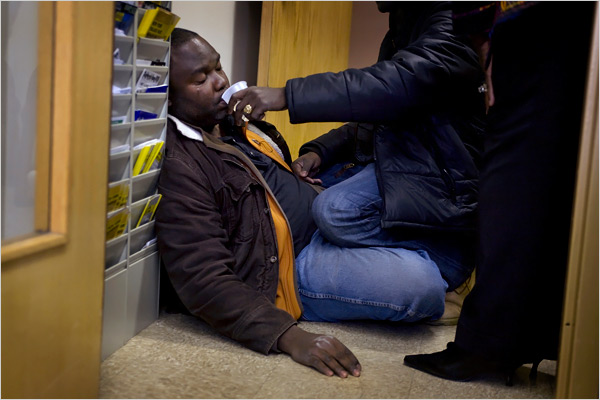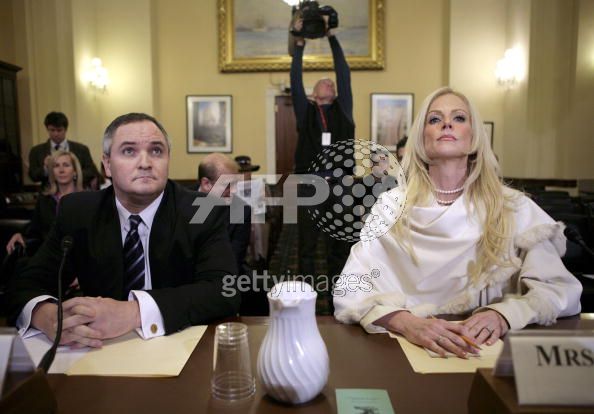Notes
Beyond Burning Bodies, High-Impact Mobilization and Those Haitians Down There

by BAGnews contributor Robert Hariman
On the surface, this doesn’t seem to have much to do with Haiti. Nothing is collapsed or broken, and there is no blood, no open wounds or stumps instead of hands or feet. The photo itself is banal: crowded, cropped, with the only identifiable person slumped in some kind of torpor, all in some vaguely institutional hallway–the image is too familiar in one sense and yet still not adequately informative. No wonder that it was tucked away in a slide show on the New York region.
But then you read the caption: “Alex Alexis collapsed when he learned that his wife and three children had died in the earthquake in Haiti.” His wife and three children. Dead.
Now it is a different photograph, and informative: We are reminded that Haiti is not only a place but also the epicenter of a diasporic community. The catastrophe is being measured not only in the damage done at the original scene but also by the long strands of anxiety, pain, and desolation defining the losses felt by loved ones around the globe. And the coverage of the island’s troubles is revealed to contain a provisional quality, as if everything is somehow already tending back towards recovery. But there is no way this loss can ever be restored.
And that is why the decor troubles me.
Even with its bland hues and the metal display case for the bureaucratic pamphlets, it still appears affluent, secure, and safe in contrast to the mess on the ground in Haiti. It reminds me that this is not only a world where many rush to aid those in need, but also a world where vast disparities in wealth are taken for granted. And why is the husband in New York if his wife and three kids are in Haiti? In this individual case the reasons could be purely personal or accidental–an estrangement, a business trip, whatever. The likely story, however, is that he, like many others, is separated from his family in order to support them.
In The Civil Contract of Photography, Ariella Azoulay identifies “threshold catastrophes”–situations where a community becomes trapped in chronic misery that is never allowed to become either completely genocidal or adequately alleviated. Palestine is one example, and Haiti may well be another. The catastrophe caused by the earthquake widens as its circle of suffering expands outward, but the fact remains that the world knows how to respond to spectacular events such as a natural disaster. What also is needed is to widen the understanding of catastrophe to include the insidious relationships and multiple failures that perpetuate the condition of poverty and other continuous political disasters.
Widening one’s understanding of catastrophe means looking beyond high-impact mobilization to see how many of the same agencies are complicit in keeping people at the threshold of destruction. It also means admitting how victims can be complicit in their own oppression, and how personal efforts to escape–say, to a good job in New York–are not going to be enough for systemic change. These are not easy truths, but they can point toward a common recognition that the catastrophe–any catastrophe–is happening here as well as there.
Cross-posted from No Caption Needed.
(Photo: Julie Glassberg/The New York Times.)


Reactions
Comments Powered by Disqus